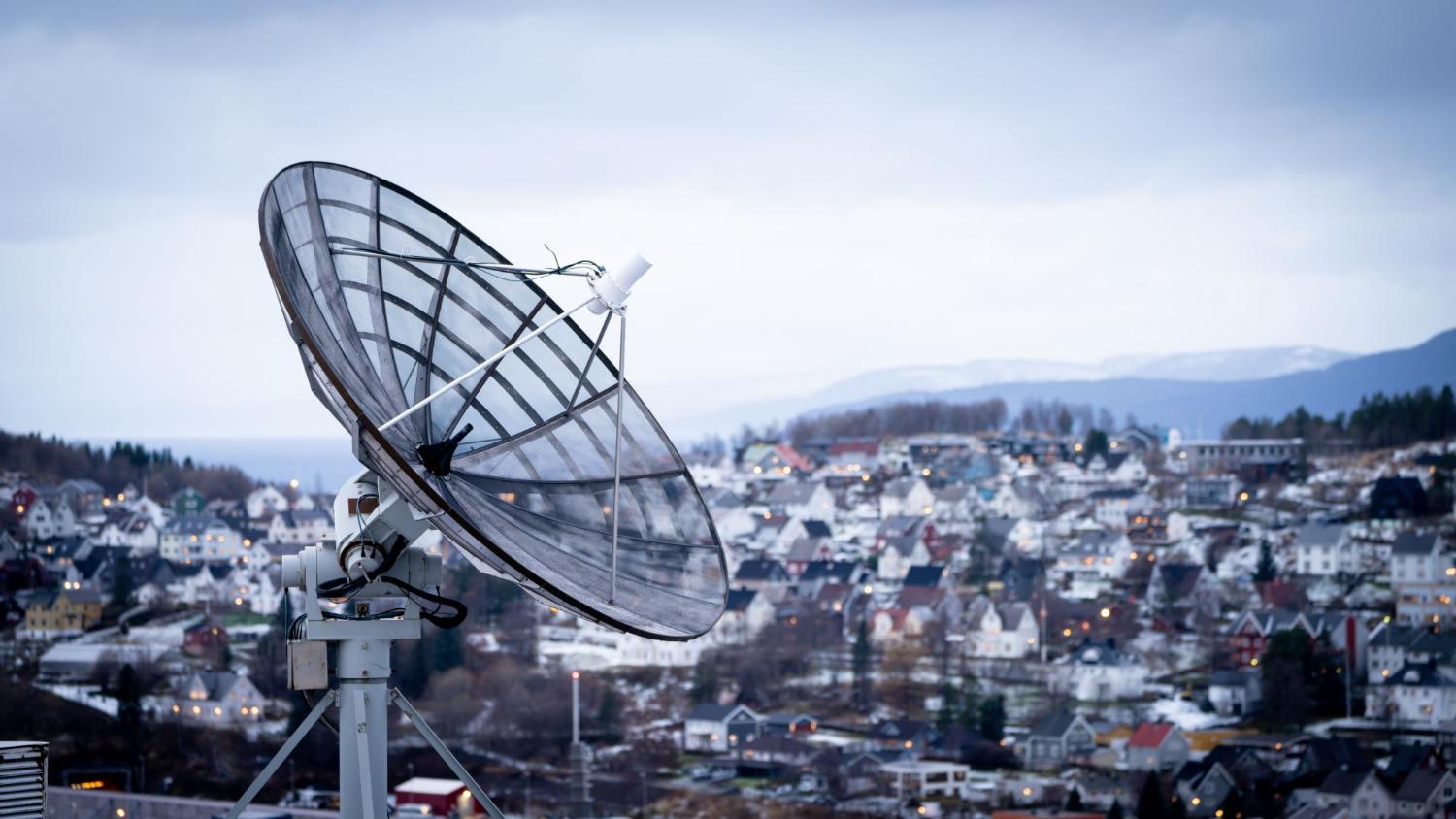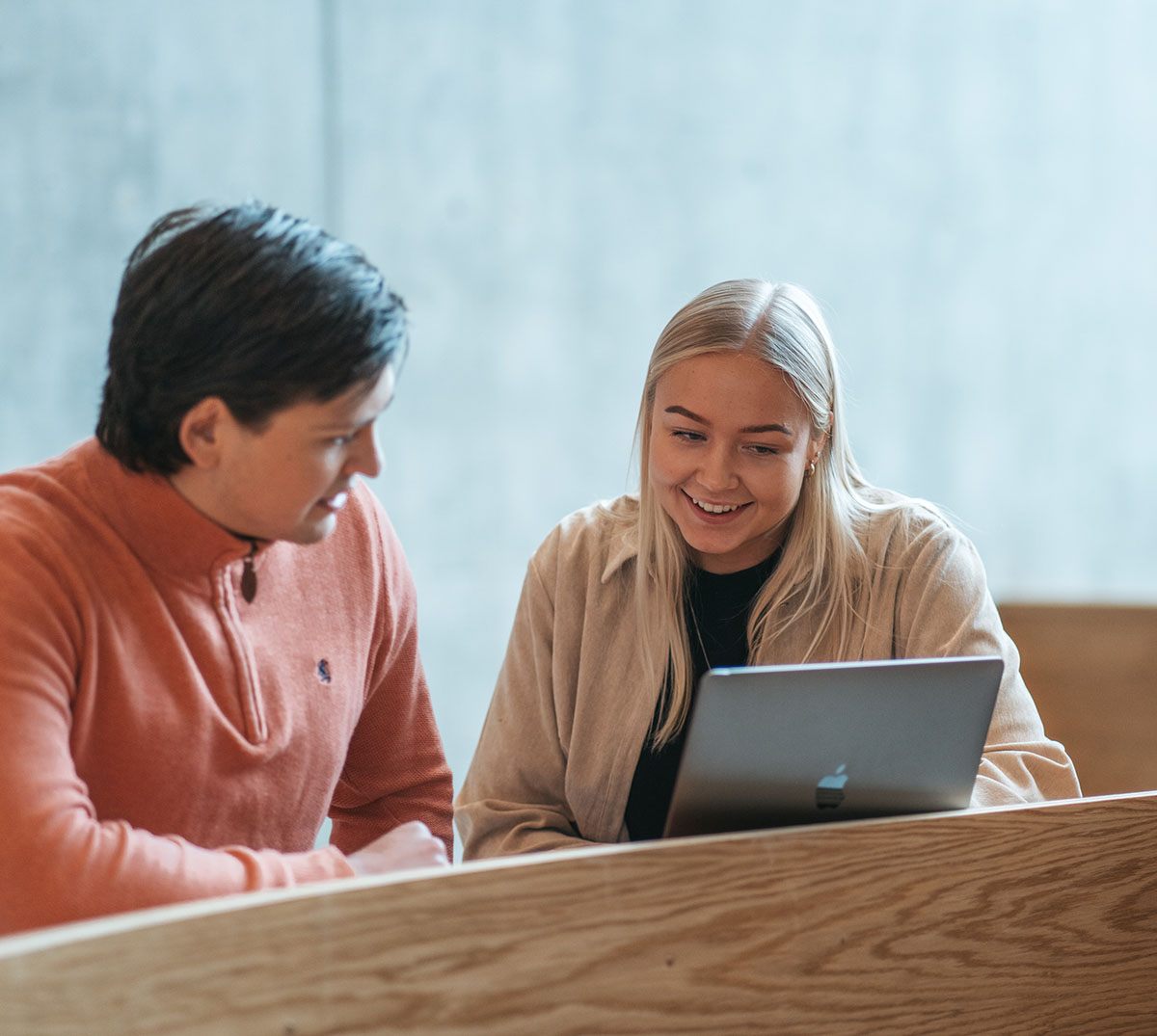Ready to Shape the Future of Aerospace? Join the Aerospace Engineering Master’s Program at UiT Narvik and take your passion to new heights. Specialize in drone technology or advanced satellite design and gain the skills to innovate and lead in this evolving industry. Be part of the next generation of aerospace pioneers and impact the future of flight and space exploration.
------------------------------------------
Klar til å forme fremtiden for romfart? Søk på Master/sivilingeniør i Satellitteknologi ved UiT Narvik og ta lidenskapen din til nye høyder. Spesialiser deg på droneteknologi eller avansert satellittdesign og få ferdighetene til nyskapning og led an i denne industriutviklingen. Bli en del av neste generasjons romfartspionerer og vær med å påvirke fremtidens fly- og romutforskning.
Her finner du norsk beskrivelse av Satellitteknologi, sivilingeniør - master
Bachelor in engineering, primarily within electronics or space technology, but it may also be within related fields such as automatic control, communications, power electronics or computer science. You must however have a sufficient background in electronics and communications.
In addition, the following requirements must be met:
- Minimum 25 credits in mathematics (equivalent to Mathematical Methods 1, 2 og 3)
- 5 credits in statistics
- 7,5 ects i physics on a higher level is required. The requirement for physics can be covered by 7.5 credits in physics, building physics, fluid mechanics, thermodynamics and/or mechanics of materials.
Admission capacity:
20 places
Applicants from within the Nordic countries:
The study is 2 years long, but with the possibility of 3- or 4-years for Norwegian/Nordic applicants and applicants from within EU/EØS.Part time study is not avaiable for Non-EU/EEA applicants.
If you don't have enough mathematics and/or physics to qualify for the master's degree, you can take one of these courses in the first semester at UiT in Narvik: TEK-2800 Mathematics 3 (5 ects) and/or TEK-2801 Physics 2 (5 ects).
Applicants from outside the Nordic countries:
Applicants with education from non-Nordic countries must document English language proficiency. You will find more information about international admission here
Non-EU students must be prepared to pay tuition fees
-----------------------------------------------------
Søkere fra Norge/nordiske land:
Studiet er 2-årig, men med mulighet for 3- eller 4 år-årig løp for søkere fra Norge/Norden og søkere innenfor EU/EØS.
Opptakskrav:
Bachelorgrad i ingeniørfag eller tilsvarende primært innen fagområdene elektronikk eller romteknologi, men det kan også være innenfor relaterte felt som automatisk kontroll, kommunikasjon, kraftelektronikk eller informatikk. Du må imidlertid ha tilstrekkelig bakgrunn innen elektronikk og kommunikasjon..
I tillegg må følgende krav være oppfylt:
Det kreves minimum:
- 25 studiepoeng i matematikk,tilsvarende Matematikk 1, 2 og 3
- 5 studiepoeng i statistikk
- 7,5 fag i fysikk på høyere nivå. Kravet til fysikk kan dekkes av 7,5 studiepoeng i fysikk, bygningsfysikk, fluidmekanikk, termodynamikk og/eller fasthetslære.
Har du for lite matematikk og/eller fysikk for å kvalifisere til siv.ing/master i teknologi, kan du ta ett av disse enkeltemnene i første semester ved UiT i Narvik: TEK-2800 Matematikk 3 (5 stp) og/eller TEK-2801 Fysikk 2 (5 ects).
Her finner du all informasjon knyttet til søking og opptak.
EU/EEA + Swiss applicants: 7144
Non-EU/EEA applicants: 9009
Program description
The program is applicable for students with an interest in learning, developing and applying state-of-the-art technology for space-related purposes. This type of technology has many similarities with technologies for other extreme environments, such as arctic regions and subsea, and students with interest in development of technologies in such fields will also find this program relevant.
The program covers the following disciplines:
• Satellite Communication
• Satellite Structures, Materials and Mechanisms
• Satellite Data Processing
• Systems Engineering
• Satellite Power Systems
• Embedded Systems
• Mathematical Modeling and Simulation
• Classical Mechanics
• Linear Algebra and Numerical Methods
• Control Engineering
• Artificial Intelligence and Intelligent Agents
See the individual course descriptions for more information about their contents.
Learning outcomes
Knowledge:
- has advanced knowledge within the field of Aerospace Engineering with a specialized focus on one of the offered disciplines.
- has thorough knowledge of the central theories and methods within the field of Aerospace Engineering.
- can apply and adapt the obtained knowledge to new areas within Aerospace Engineering.
- can analyze problem statements within Aerospace Engineering on the basis of its history, traditions, distinctive characteristics and its influence on society.
Skills:
- can analyze existing theories, and methodologies in the field of Aerospace engineering and work independently on practical and theoretical problems.
- can use relevant methods for research and development in an independent manner.
- can analyse and remain critical to various sources of information and apply them in academic reasoning.
- can complete an independent, narrowed research or development project with supervision, that is aligned with current standards of ethics in research.
General competence:
- can analyse relevant academic, professional and research ethical problems.
- can apply their knowledge and skills in new areas in order to carry out advanced assignments and projects.
- can communicate extensive independent work and masters language and terminology of the academic field.
- can communicate about academic issues, analyses and conclusions in the field, both with specialists and the general public.
- can contribute to new thinking and innovation processes.
Job prospectives
Successfully qualified candidates can acquire jobs in a range of Norwegian businesses, which contribute technical products and services within aerospace and satellite technology, but also within fields as subsea engineering, systems engineering, or robotics and automation.
The program also provides a basis for working with project management and marketing, or teaching in technical subjects at Bachelor's level.
The degree qualifies to start as a PhD-student within relevant ph.d.- areas (i.e. engineering cybernetics, applied mathematics,control engineering, engineering science).
UIT Campus Narvik has a ph.d. education within the field of Engineering science, which students from Aerospace Engineering are qualified to get a position at, if the grades are sufficient (for instance for acceptance as a doctoral student), and if there are available positions.
The academic content, learning activities and assessments presented in this study plan ensure relevance to the current state-of-the-art in the field of Aerospace Engineering.
Degree Name
Master of Science in Aerospace Engineering / 'Sivilingeniør'Access to further studies
After graduation from the master program in Aerospace Engineering, the candidates may pursue PhD studies at UiT campus Narvik in within the field of Engineering Science and Technology - or other faculties at UiT within fields such as engineering cybernetics, communications or aeronautics.
Studieplan
Language of instruction
English
Teaching and assessment
The program is an on campus fulltime (2 years ) or part time study (3 or 4 years) in Narvik.
The part-time programs are focused on students who are working or cannot attend full-time studies. We recommend that part-time study be carried out in collaboration with a company that facilitates mutual benefit. Among other things, there is an opportunity to propose a master's thesis in collaboration with the company.
The choice between a 3- or 4-year program depends on the amount of time a student can commit to their studies. The 3-year option requires 75% of the student's time, while the 4-year option is designed for a 50% time commitment.
For more information, see the latest version of the study plan under "Study plan" on the program's main page.
Part time study is not avaiable for Non-EU/EEA applicants.
Refresher course:
A digital refresher course in linear algebra is offered prior to the start of studies. In this course, central concepts and methods from previous linear algebra courses will be repeated. Experiences from previous years are that students who participate in this refresher course benefit greatly from this in the course Linear Algebra II.
Learning activities is completed differently depending on the subject.
The traditional lecture model is commonly used, in addition, some instances occur where variants of flipped classroom is used.
In a traditional lecture model, the teacher gives lectures at scheduled hours.
A portion of the scheduled lectures will, however, be reserved for other learning activities such as problem solving, completing mandatory work, project work or laboratory work. The person with course responsibility or teaching assistants will be present to provide guidance at these events.
The students learn through preparation and working on the lectured theory, completing mandatory coursework requirements, doing problem solving, project work together in groups, laboratory work, self-evaluating and a fair amount of self-study.
When utilizing flipped classroom the lectures is moved out of the classroom and is done as part of the preparation by the student and thus the student itself has the responsibility of completing the lectures. The preparation part usually consist of students watching pre-recorded videos, in addition to studying recommended parts of the reading list, notes and recommended relevant materials. The scheduled hours at the university is then used for reviewing a specific subject matter, and mainly for problem solving. The flipped classroom model can also be used in a “hybrid”-model where parts of the subject is done using the traditional lecture model and other parts is completed using the flipped classroom model.
The students learn through the same mechanisms as mentioned for the traditional lecture model above, however the students have a larger responsibility them self to acquire the knowledge necessary for problem solving.
It is important that the student knows the difference between problem solving, coursework requirements, and evaluation.Coursework requirements is mandatory requirements that’s has been precisely formulated in the course description. In order for the student to be assessed, the course requirements must be approved. Task given in problem solving sessions are task that not necessarily will be marked; these are given to the students for practice and/or preparation for bigger task such as coursework requirements. It shall be made clear when a task is presented whether or not it is voluntary or part of the coursework requirements.
Mandatory coursework requirements may for instance be formulated as “X of Y mandatory tasks must be approved” “the student must be present 70% of the scheduled hours”.
The person with course responsibility makes a list of students with approved coursework requirements to the exams office. Only those with approved coursework will be assessed. The manner of which the students are assessed is described precisely in the course description of individual courses. This may for instance be
• Written exam (pen and paper)
• Oral exam
• Combined of several works, which may include a written exam
• Group exam
• Portfolio assessment
The opportunity for completing a re-sit exam (re-assessment) in acourse may vary between courses. Details may be found in the specific course description.
Attending the learning activities in the various courses provides the students’ knowledge on scientific theory and experience using the scientific method. Subject matter in the specific courses is based on relevant and in some cases state-of-the-art research.
Some courses require mandatory health, security and environment (HSE) training before students are allowed access and given permission to work in laboratories, workshops and similar. This also goes for participation in fieldwork/research cruises and similar. Please contact your immediate supervisor for list of mandatory courses.
It is possible to study parts of the master program at other universities, provided that external courses are similar in content and scope to those specified in the study plan.
An individual plan must be made in accordance with the study coordinator.
Destinations for studies abroad
Jose Juan Corona Sanchez
FørsteamanuensisFølg @uitstudent på Instagram eller TikTok for å få et enda bedre innblikk i hvordan det er å studere på UiT. Her viser studentene fram sin studiehverdag, deler tips og nyttig informasjon, og du kan stille spørsmål om alt du måtte lure på.
Sjekk også @uitnorgesarktiske på Instagram eller TikTok for info om studier, jobbmuligheter og forskning.



